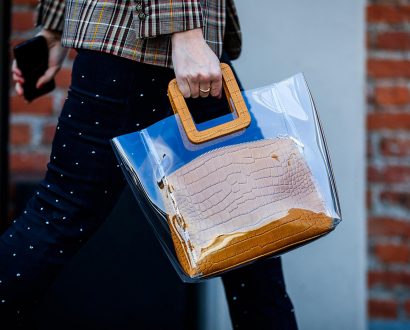The luxury resale market is expected to soar with the rise of mindful consumerism

Recent reports show the resale apparel marketplace will be worth an estimated US$41 billion by 2020, with an expected 15% annual growth between 2017 and 2022.
The market that is currently valued at over US$20 billion is booming, with the rise of luxury consignment online retailers that offer a platform for people to buy and sell designer goods.
Global fashion search engine Lyst has reported that traffic to luxury resale products has increased by 447% over the past six months.
The RealReal, a leading luxury-for-less online destination with over five million users, proves that demand for authenticated luxury consignment is increasing. Founder of the US-based brand, Julie Wainwright was named in Forbes 40 Women to Watch Over 40 list last year for her success in reinventing the luxury realm.
Offering top-notch brands such as Chanel, Prada and Celine among others, and even luxury jewellery and watchmaking brands including Rolex, Cartier and Bvlgari – The RealReal encourages the lifecycle of luxury by enabling a community to share in quality craftsmanship.
Consigners on the site can make a substantial buck on their used goods. For items priced under US$200 they can make 50% of the original retail value, and for items valued at $10,000 and over, they can make around 70%. They can also get an extra 5% if they choose to take their paycheck in the form of store credit – a business model that ensures consigners keep coming back for more recyclable goodness.
Although making money on used goods may be the initial motivation for consigners to sign up to The RealReal, it’s a choice that also happens to help the planet. Selling over four million items on its site, the innovative retailer is encouraging consumers to be environmentally responsible. Spruiking the notion that luxury products are designed to last a lifetime, clients are encouraged to get the maximum value out of quality goods.
And with an aim to revolutionise the US$420 billion luxury fashion industry, the high-end used-goods store acts as a trusted intermediary, promising its customers authentic products and dispelling the fear of counterfeits.
A high-end level of online customer service, curated wardrobe edits and editorials, along with size, colour and brand filters to help personalise the shopping experience, mean thrift is no longer limited to sifting through endless racks at a brick and mortar store.
With consumer consciousness materialising in the luxury sphere, the resale slow fashion market is expected to overhaul the fast fashion industry led by retail tycoons Zara, H&M, and Topshop in the next 10 years
Ecommerce luxury consignment mogul Vestiaire Collective, founded by Sébastien Fabre in 2010, also markets itself as a place for pre-owned fashion at 30–70% off the retail price. With seven million members globally, and one million of those having joined last year, the consigners and buyers of the site are smart shoppers seeking out both firsthand and second-hand luxury goods – and these ecommerce resale disruptors offer a lucrative, easy and trustworthy way to do it.
"We’re seeing customers evolve and become more mindful about their consumption habits. As brands and their products are becoming more visible via the likes of Instagram, everyone is seeing the same thing and individuality is standing up against this sense of homogeny," said Chief Marketing Officer and Vice President, Ceanne Fernandes Wong of the eight-year-old brand.
Millennials are leading in the luxury sharing economy, with 77 per cent of 18–24-year-olds shopping with an environmentally conscious mentality. Due to the rise of personal brand identity as a result of social media, millennials are impulsive and tend to discard items after 1–5 wears, making them the ideal target for resale magnates.